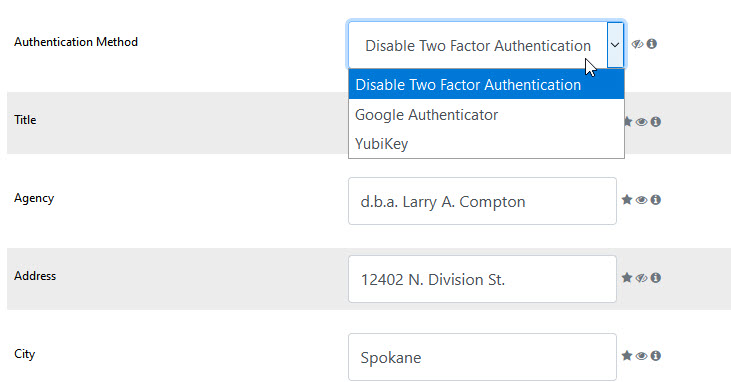Western Digital claims HDD capacity doubled with nanotech breakthrough (PCWORLD)
Western Digital has announced what it said is a nanotechnology breakthrough that will allow the company to double data storage capacity on hard disk drives (HDD).
There is more Digital & Multimedia Evidence (DME) than any other type of evidence today.
Working together we've expedited tens of thousands of criminal investigations. Learn more
Western Digital has announced what it said is a nanotechnology breakthrough that will allow the company to double data storage capacity on hard disk drives (HDD).
Sheriff John Whetsel, Oklahoma County, OK, recently sent a letter to his fellow Police Chiefs and Sheriffs asking for their support of LEVA's mobile video technology survey and the 2011 National Summit for Mobile Video Technology.
To view a PDF version of Sheriff Whetsel's letter click here.
Alan Paller is director of research for the SANS Institute, a provider of security training and certification.
A few Sundays ago, the managing partner and IT partner from a large law firm in New York came to my home for a visit. It wasn't just for coffee. They had flown down to Washington to discuss what they might do in the aftermath of a troubling visit from the FBI.
Here's how the conversation went. Read full story >
It's a familiar scene in movies and on TV: a character, seeking to understand an issue involving computers, proclaims that an "expert" is needed. A teen is then brought on screen or referenced in dialogue.
The scene is funny because it illustrates something with which the audience is familiar anecdotally: the "digital divide."
While computer literacy is not universal, neither is it rare.
Complete Story w/Case Law References - click here
A new document is being developed by the Federal Law Enforcement Training Center (FLETC) entitled, "Best Practices for Handling Digital Photographs Taken by Law Enforcement." The author of the document is Keith Hodges, Esq., a legal instructor at the center. Keith is seeking feedback from the community regarding his document. The document is posted at http://www.khodges.com/digitalphoto/
Keith is requesting feedback be sent directly to him at the following email address: keith.hodges@dhs.gov
As Adobe's Creative Cloud lineup of art and design applications gains prominence on the company's landscape, the quantity and pace of updates to Creative Suite 6 and related subscription-based products is gathering momentum. New features for subscription products and services, in the pipeline throughout the summer, are being prepped for public release over the next few weeks.
You can’t say that the SD Association isn’t keeping up with the times. A good seven months after the association revealed the UHS-I specifications, it’s back again with the UHS-II bus-interface system that promises high-definition recording speeds of up to 312MB/s, allowing professionals to consider an SDHC or SDXC-based camera instead of having to rely on CompactFlash or SSD drives.
What's the best way to deter a thief? Ruin the spoils, of course. Verizon, AT&T, T-Mobile and Sprint have agreed to a broad outline that will culminate in the creation of a central database for stolen cellphones. The goal? To block lifted units from functioning on US shores. Over the next six months, each firm will build out its own stolen device database for integration into a larger, central database, said a Wall Street Journal source, with regional carriers joining the effort over the following two years.
I finished some major updates to the site last night, including upgrading to a newer, faster core database. I also updated our DCCTV Player Library to include new features, better performance, and better layouts. In doing the latter I was reminded of Joe Fragomeni's significant contributions to our DCCTV Player Library, and his continued contributions here and elsewhere to the entire multimedia evidence community.
Digital video evidence is coming at law enforcement agencies hard and fast, and both the pace and quantity of digital video evidence continue to increase exponentially. There are so many digital video sources, each with unique challenges and issues when it comes to proper evidence collection, viewing, interpreting, presentation and management of the evidence. Training is critical for all of those involved in the entire chain of evidence, especially in a field or discipline that is constantly changing and evolving.
If you’re involved in the digital video evidence chain, below are a few training events that I’ll be at next month that you may find interesting. Hope to see you there!
May 13-15, DVR Assessment & Video Recovery, Burtonsville, MD
May 19-23, LEVA Level 1 – Forensic Video Analysis & The Law – University of Indianapolis, IN

Found this article from TechCrunch absolutely fascinating.
Prosthetic Retinas displaying a cameras image directly into your noggin using photovoltaic materials, which turn light into electric current. Come on, so cool!
The future is very bright, my friends. Be safe out there & make it a great day!
A great overview on the history of aspect ratio. I was going to link it to our library, but apparently I have to update the code for the Vimeo videos. Ugh. I'll get to it, just seems my to-do list is a bit like the NTFS $MFT...it only grows, never shrinks! ;)
The Changing Shape of Cinema: The History of Aspect Ratio from FilmmakerIQ.com on Vimeo.
Do you use a YubiKey or the Google Authenticator app? The latter is free, and now you can use either of them to enable Two-Factor Authentication (2FA) here at DME Resources.

Simply log-in and choose "Edit Profile" from the Control Panel, then select your preferred method from the drop-down options for "Authentication Method".
Follow the prompts that will be shown to configure, then press the "Update" button displayed at the bottom of the page.
That was easy.